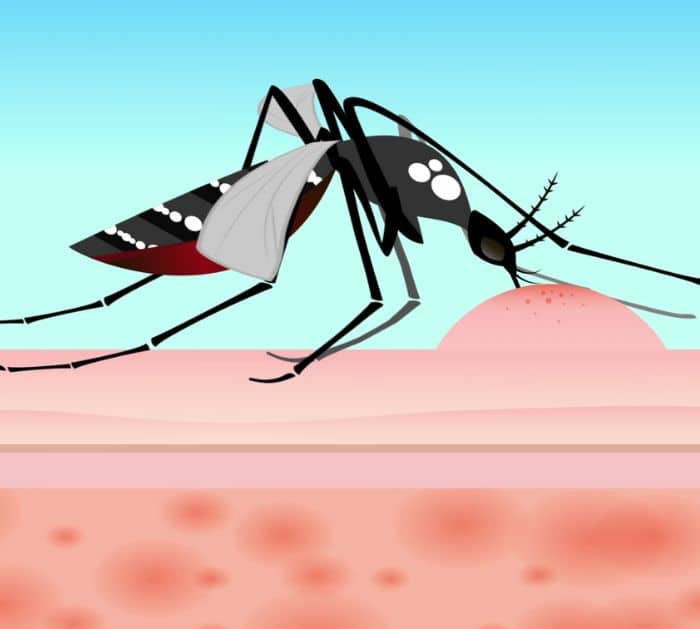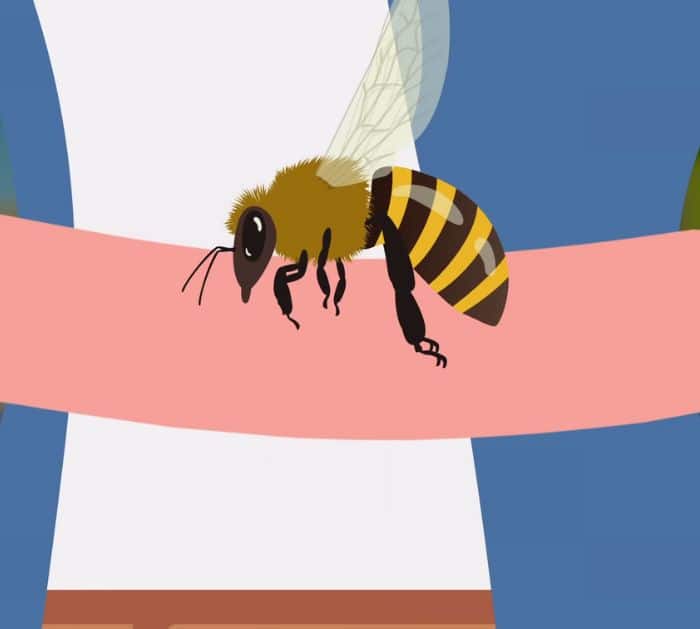
Going outdoors for a fun activity, especially during the summer is normal and something enjoyable for a group of friends or family. However, there are a couple of things that might spoil your fun that come in little sizes, and those are bugs and insects. Some bug bites are not dangerous but they can be uncomfortable, but there are also bites that can be dangerous and might need immediate action. Learn how to identify and treat them with this video tutorial by BRIGHT SIDE on YouTube.
Types of bites
- Spider bites
- Mosquito bites
- Tick bite
- Bug bite
- Bee sting
Directions:
Spider bite
A lot of spiders are venomous but not for humans because human skin is too thick for most of them which make them unable to inject with poison. However, there are 3 spiders you should avoid, black widow, tarantula, and brown recluse. A spider’s bite usually looks like 2 dots in a circle, and their bite can cause intense pain that lasts for 1 to 1.5 hours, their symptoms can include dizziness, shivering, and difficulty in breathing.
If a spider does bite you, don’t put a tourniquet on the bitten arm or leg, don’t try to cut the wound by yourself trying to get rid of the poison, and don’t eat. You should wash the bite area with soap, then put ice on it, take a painkiller if necessary, and drink a lot of water. If the bite is on the arm of the leg, put it down to stop the spreading of the poison, then take some antihistamine if needed, to prevent an allergic reaction. If the bite starts swelling or you feel pain, call the doctor immediately.
[social_warfare]
Mosquito bite
Mosquito bites usually look like swollen red spots about the size of a small berry and they can be mistaken for a skin allergy, the difference is that they’re usually only found on open areas of the body, where the skin is thinnest and blood vessels are closer to the skin. When biting a human, mosquitos inject their saliva, which contains a blood-thinner, into the wound. This is what causes the swelling, redness, and itching.
This can be dangerous if you have an allergy to mosquito bites wherein a single bite can cause an extensive rash on a big area of the body. If you start getting a fever, pain in your joints, and your lymph nodes start swelling, call a doctor as it could be an infection.
Tick bite
A body reacts to a tick’s attack with a red spot in the place of a bite, the insect can stay attached to the skin for a long time and you won’t be able to feel or see it until a few hours or days later, because as they are sucking blood and start increasing in size which then makes them noticeable. Even though about 80% to 90% of ticks are non-infectious, there are still some that can bring disease and infect people with encephalitis, borreliosis (Lyme disease), and other diseases.
If you’ve found a tick on your body, remove it with tweezers and go to the doctor even if you feel fine, tick bites take a period of time before it starts showing symptoms, you can also take the tick that bit you so that they can study and check whether the tick is infected.
Bug bite
Bug bites look different, some people don’t notice them at all while others have a strong allergic reaction with itching and pain. A bug bites through the skin trying to feel for a suitable capillary that’s why it often leaves a line of 5 to 7 bites in a row. One of the nastiest effects of a bug’s bite is constant itching and they are also painful to the touch. Hygiene is a bug’s main enemy, so just wash the bitten spots with soap and make sure it’s clean. At worst, you’ll need to take an anti-inflammatory medicine or antihistamine to lessen the pain and itchiness.
Bee sting
A bee leaves a stinger in the spot where it got you and you’ll have to extract it carefully. Bee stings aren’t dangerous if you don’t have an allergy to them. The pain trauma is different depending on where you’re bitten, if it’s on the leg, arm, or back, the damage will be minor. When you’re stung by a bee, the skin will become red and swollen or a small thick blotch will appear, then you’ll feel a stinging pain and burning, and the spot around the sting will become white. There will also be a pin and needle sensation that lasts for 15 to 20 minutes after the sting, then you’ll feel intense itching.
The swelling will last from 1 to 2 hours, but things are much worse if you have an allergy to apitoxin, the poison the bees release when they sting, the bite can lead to Quincke’s disease and anaphylaxis which is life-threatening. After you’ve been stung, tend to the wound with hydrogen peroxide, then put ice on it, the cold will relieve the pain and reduce the swelling. If you suspect an allergic reaction, call the doctor immediately and take an antihistamine to reduce the symptoms.
*All image credit belongs to BRIGHT SIDE via YouTube. Follow and subscribe to their channel for more!






